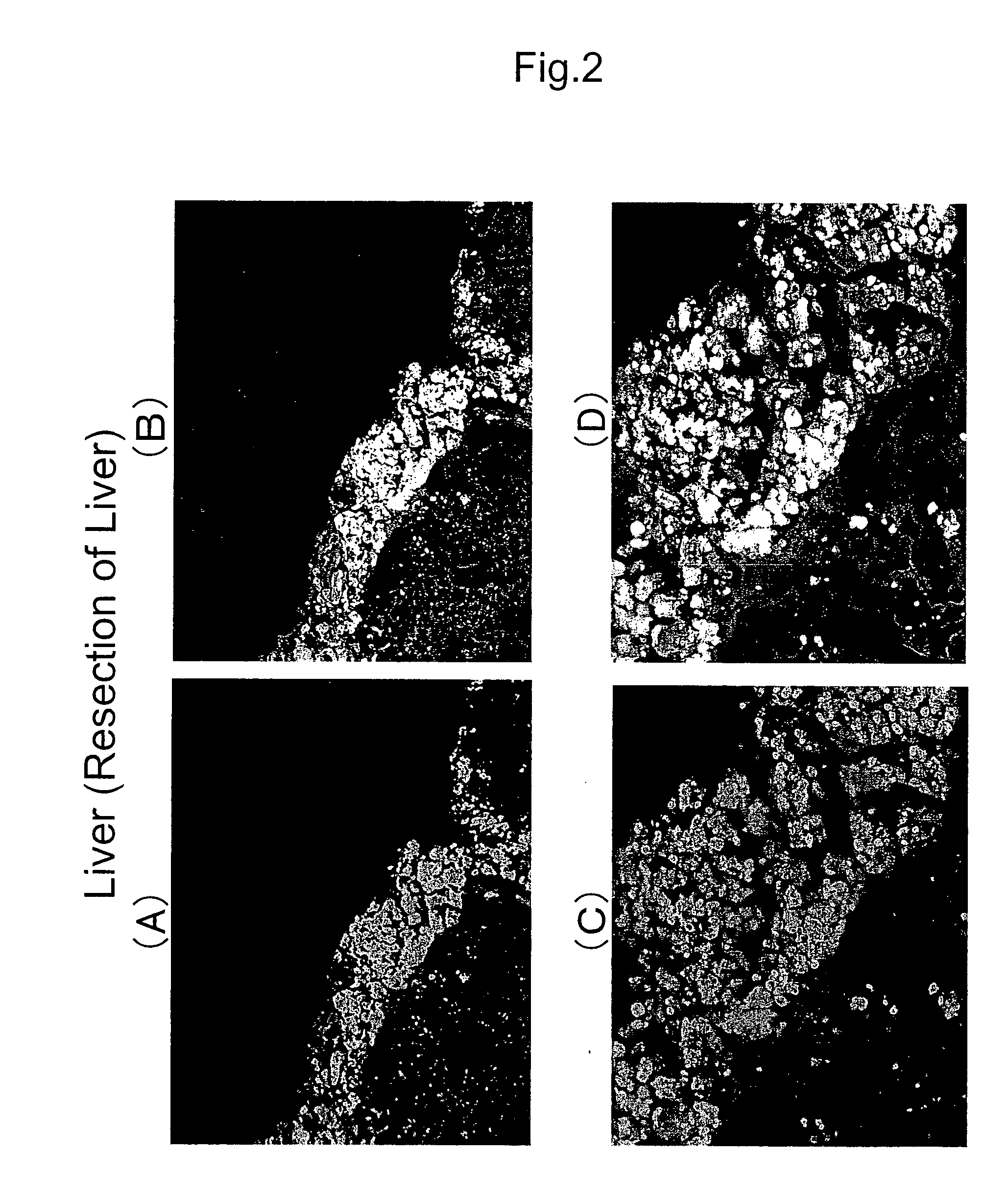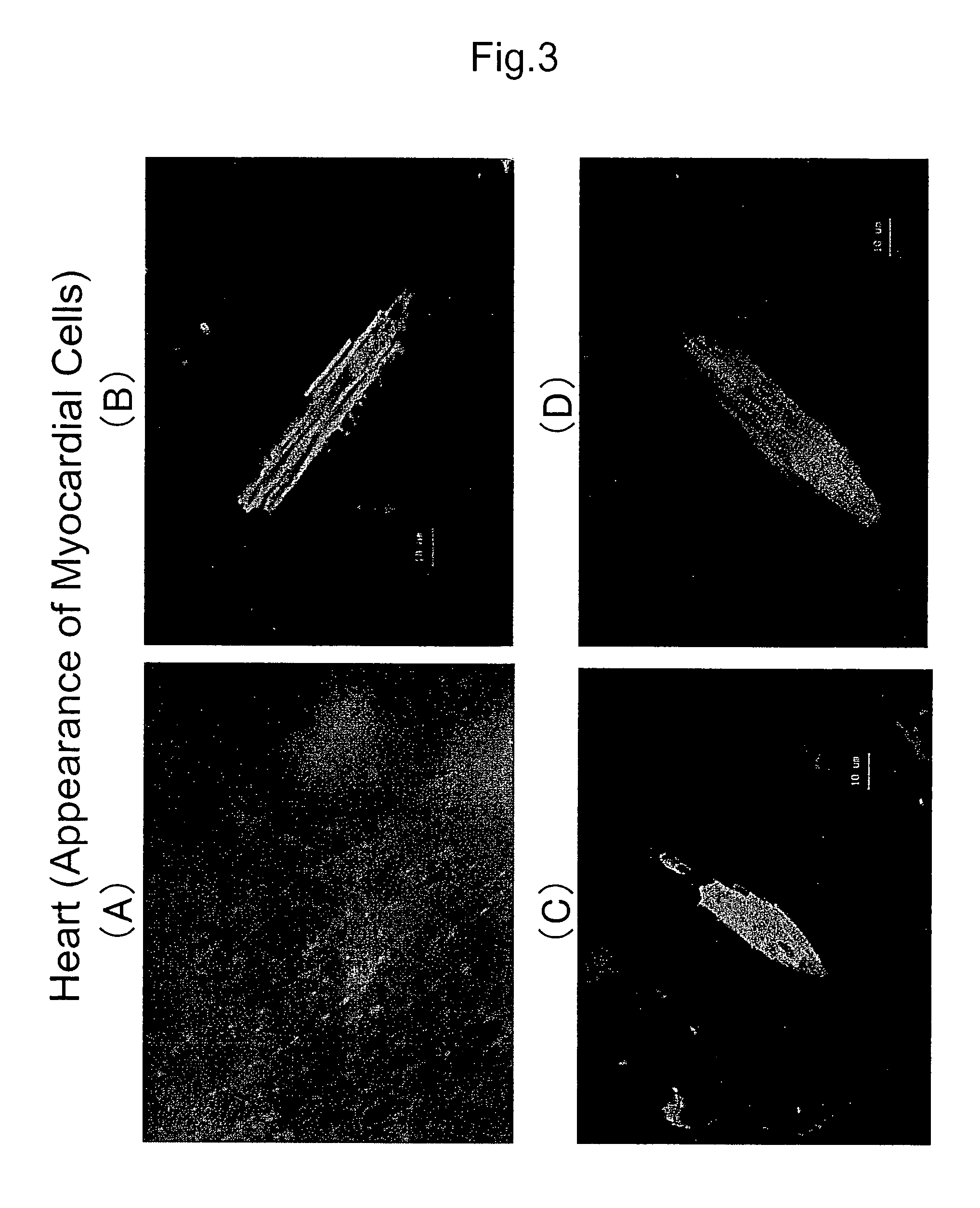Method of organ regeneration
a technology of organ regeneration and organs, applied in the field of organ regeneration, can solve the problems of not being able to prove the use of stem cells having the characteristic of oval cells, extremely difficult to control es cells, and two major problems of es cells, and achieve the effect of high ratio
- Summary
- Abstract
- Description
- Claims
- Application Information
AI Technical Summary
Benefits of technology
Problems solved by technology
Method used
Image
Examples
example 1
Regeneration of Liver
(1) Mice
[0066] GFP (green fluorescent protein)-transgenic mice (hereinafter, called “GFP mice”) were prepared by ligating a DNA encoding GFP to Actin promoter (Okabe M. et al., FEBS Lett. 1997; 407(3):313-319). These GFP mice were used as donors in bone marrow transplantation. GFP is expressed in every type of cells in the body. Therefore, when cells derived from these mice have been transplanted in recipients, it is possible to identify donor-derived cells by detecting GFP positive cells.
[0067] C57 / BL6 mice were purchased from Charles River Japan and used as recipients in bone marrow transplantation.
[0068] Both mice were bred in animal facilities of Kyushu University under specific control.
(2) Preparation of Bone Marrow Cells
[0069] Bone marrow cells to be transplanted were prepared from GFP mice. Briefly, after dissection of GFP mice, bone marrow cells were collected from thighs and shinbones. The collected donor cells were passed through a 25-gauge ne...
example 3
Regeneration of Other Organs
(1) Mice and Bone Marrow Cells
[0101] Breeding / administration of mice and preparation of bone marrow cells were carried out in the same manner as in Example 1. Pretreatment (irradiation) of mice and transplantation of hematopoietic cells (bone marrow transplantation) therein were also carried out in the same manner as in Example 1.
(2) Creation of Injury Models
[0102] (2-1) Injury Model of the Lung
[0103] Alveolar epithelial cells were injured by exposure to high concentration oxygen or by administration of LPS (endotoxin).
[0104] (2-2) Injury Model of Kidney
[0105] Mesangial cells were injured with anti-Thy-1 antibody.
[0106] (2-3) Injury Model of Small Intestine
[0107] Radiation enteritis was induced by irradiation.
[0108] (2-4) Injury Model of Bone
[0109] Irradiation was performed.
[0110] (2-5) Injury Model of Tooth and Gingiva
[0111] The gingiva was directly injured with a needle or cells were poured into the gingival.
[0112] (2-6) Injury Model of...
PUM
| Property | Measurement | Unit |
|---|---|---|
| time | aaaaa | aaaaa |
| time | aaaaa | aaaaa |
| time | aaaaa | aaaaa |
Abstract
Description
Claims
Application Information
 Login to View More
Login to View More - R&D
- Intellectual Property
- Life Sciences
- Materials
- Tech Scout
- Unparalleled Data Quality
- Higher Quality Content
- 60% Fewer Hallucinations
Browse by: Latest US Patents, China's latest patents, Technical Efficacy Thesaurus, Application Domain, Technology Topic, Popular Technical Reports.
© 2025 PatSnap. All rights reserved.Legal|Privacy policy|Modern Slavery Act Transparency Statement|Sitemap|About US| Contact US: help@patsnap.com



